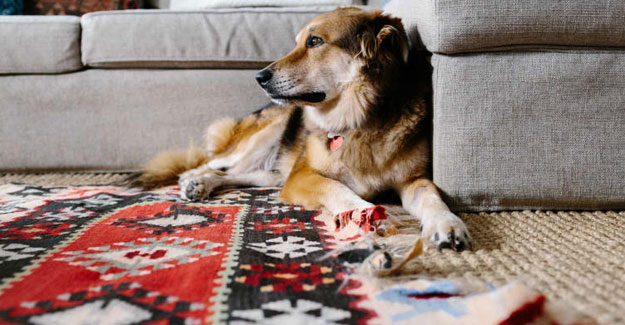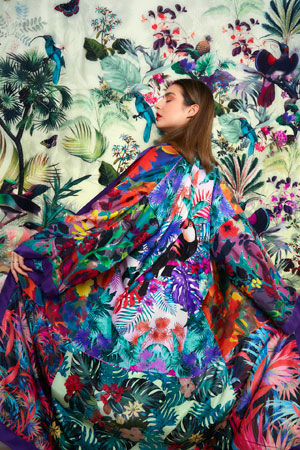
Décor Textile Printing A Growth Market For Dye Sublimation
Dye sublimation printing dominates the digital textile printing landscape, accounting for almost 50% of all digital textile prints across the wide format and apparel sectors. The dye sublimation textile printing market, which was valued at US$ 8.1 billion in 2019, is registered a CAGR of 10.7% during the forecast period from 2020-2025, and is expected to reach a value of US$ 14.2 billion by 2025, according to some studies. So, what are the factors influencing the success and growth of dye sublimation digital textile printing? Ease of dye - sub digital printed production The dye sublimation process offers a simple, environmentally secure and reliable way of textile printing. With just two simple steps, print and heat fix. When using dye-sub, and the transfer printing method, there is no need to pre-treat the fabric, or to ensure that the fabric is crease and wrinkle free in a printing machine. Dye-sub prints onto paper which is a stable and flat platform to receive the print. Post print, dye-sub just only requires heat fixation in a rotary heat press, as opposed to the acid and reactive systems which both require finishing: steaming, then followed by open-width washing and drying. The appeal of dye-sub is not just confined to entry level printers, who are thriving on the uncomplicated process, but it also scores with the volume digital printers and mills who enjoy harvesting the considerable energy and water saving properties of the dye-sub process. Speed of production The dye-sub digital print process delivers product quickly and fulfils the speed to market algorithm that is essential in creating a relevant winning décor market proposition. The simplicity of the dye-sub process route when compared to other digital print technologies gives it a substantial advantage, no delays for coating, steaming or post-print washing, ensuring that the product is ready for dispatch very soon after print. Innovation is also playing its part in increasing speed to market, with the launch of the Durst P5 ISUB, one step dye sub print process, where the fixation step is absorbed into a continuous process, further simplifying and speeding the dye-sub print process. Customisation in décor market has proved a winner This is because dye-sub is particularly suited to the contract furnishing and upholstery market, where it provides a simple method of printing various treated fabrics, without the need for post treatment. Diversity and ingenuity of digital textile machinery Today a user has a wide choice of digital printing machines from entry level to industrial production. From Epson's SC-F100 A4 dye-sub desktop printer, all the way through the medium priced Mutoh RJ-900X, Epson F10000, HP Stitch S1000, Mimaki TS-100 series and the Roland RT 640, to the top of the range Mimaki Tiger 1800B, the Colorjet SubliXpress and the Durst P5 - the choice for the printer is extensive, and whatever the budget, there is a machine for everyone. Most sustainable way to print fabrics Digital print technologies are estimated to save 95% water and 75$ energy compared to conventional printing methods. In the dye-sub printing process, no toxins exist, thus protecting workers and the environment. The dye sublimation ink turns into gas via the heat transfer process, and the printed fabrics are completely safe to touch and handle. Additionally, because the dye-sub print process, although still evolving, has been with us for over thirty years, ink technology has also matured with the process, creating more eco-friendly inks, free of heavy metals, no formaldehyde or alkylphenol ethoxylates, and without VOC's or toxins. As a result, today, most dye sub inks are OEKO-TEX or Greenguard certified and are safe for inkjet printing on polyester fabric to create a wide variety of sublimated items, including products for babies and toddlers. So, as the dye sublimation agenda moves forward, the pillars of its growth, whether it's ease of use, speed of production, contract fabric printing, the wide spread of available machinery or the sustainability of the process, as the statistics show - it is setting the pace for all other technologies in its field. Analysts especially expect accelerated growth in the interior decoration sector, in contract furnishings and upholstery, mainly due to the flexibility of customisation.

Textile Excellence
If you wish to Subscribe to Textile Excellence Print Edition, kindly fill in the below form and we shall get back to you with details.








